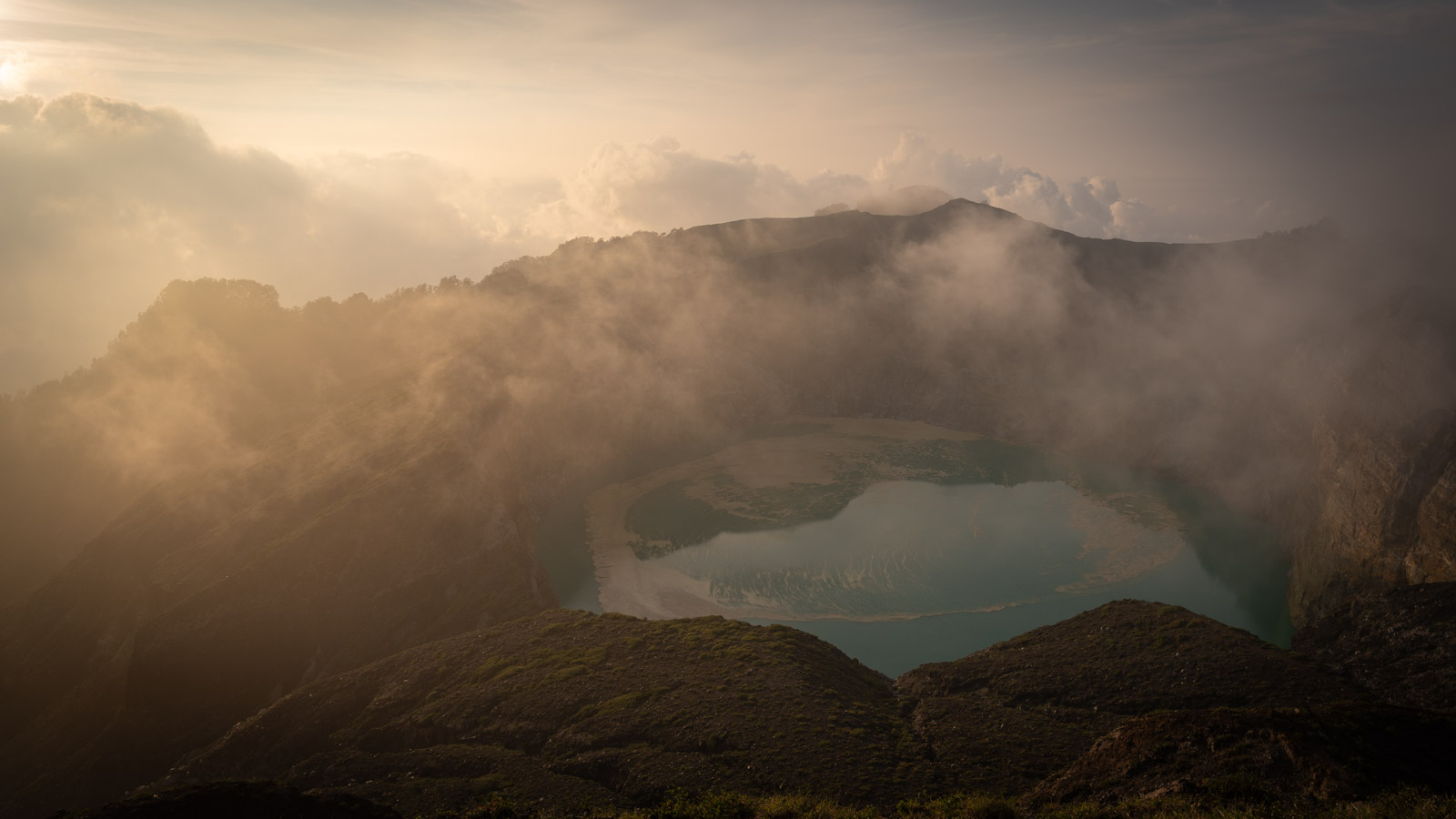Planning to visit Moni in Flores, Indonesia? This charming mountain village is the perfect base for visiting Kelimutu Volcano, exploring hidden hot springs, and experiencing local village life. In this Moni Flores travel guide, we share our personal tips, best places to stay, how to get there, and hidden gems most travelers miss.
Getting to Moni, Flores: Flights and Scenic Mountain Drive
Our journey began with a flight from Bali to Labuan Bajo, followed by a short propeller plane ride with Wings Air to Ende. From Ende Airport, we arranged a driver for the scenic 1.5 to 2-hour mountain drive to Moni — a peaceful village nestled near the famous Kelimutu volcano. The fixed price for a private driver is 600,000 IDR and can be arranged through your homestay or at the official taxi booth inside the airport.
If you’re on a budget, you can take an ojek (motorbike taxi) for around 20,000 IDR per person to the bus terminal in Ende, about 10 minutes away from the airport. From there, local buses to Moni cost 50,000 IDR per person, but note that the last one leaves at 12 PM. After that, you can catch a travel (shared public taxi) for around 100,000 IDR per person.
The drive to Moni winds through lush, green hills — a beautiful preview of the nature-packed days to come.
Where to Stay in Moni, Flores: The Geckos Homestay
Our base was the charming The Geckos Homestay, a family-run guesthouse with simple but cozy cottages. Located just outside of Moni town and surrounded by nature, it offers a peaceful setting with a real local feel. One of our favorite features was the lush outdoor bathroom — showering under the open sky with jungle sounds in the background was a treat.
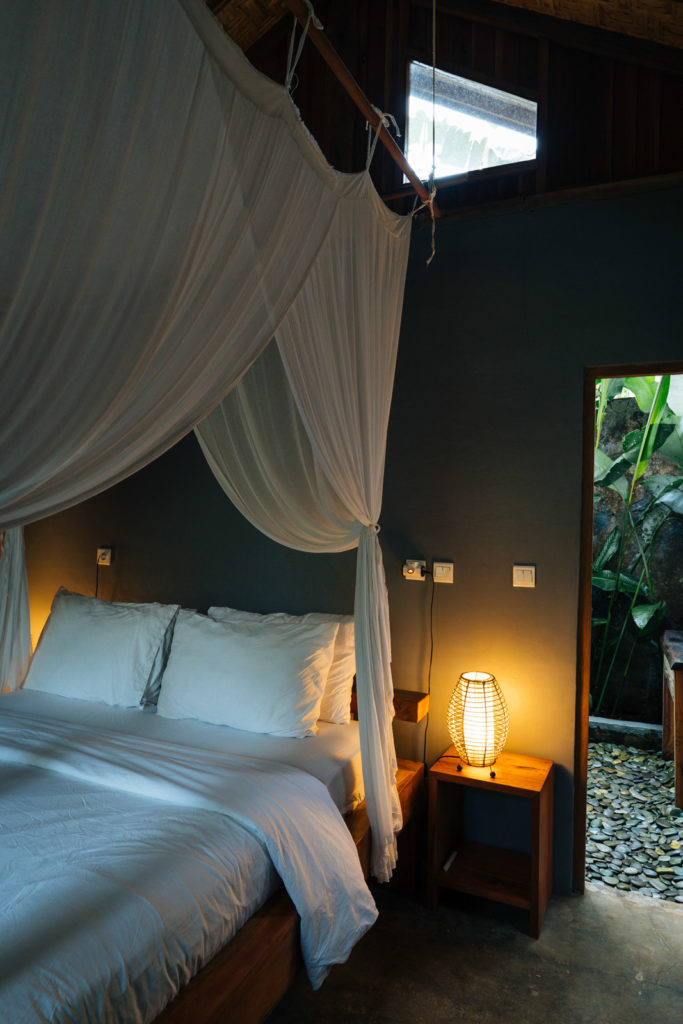
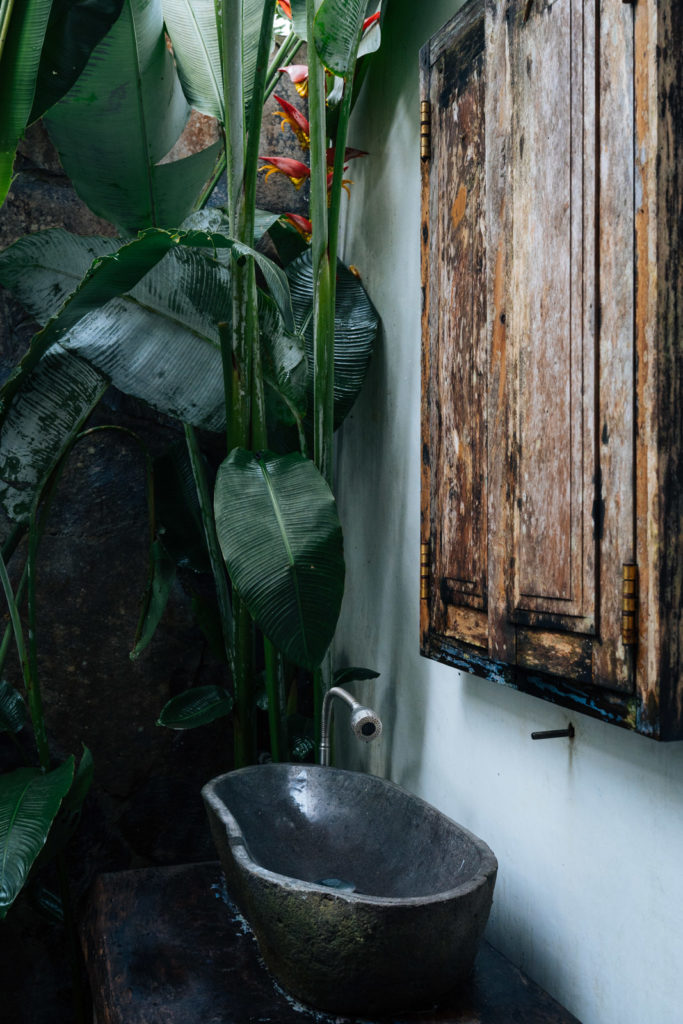
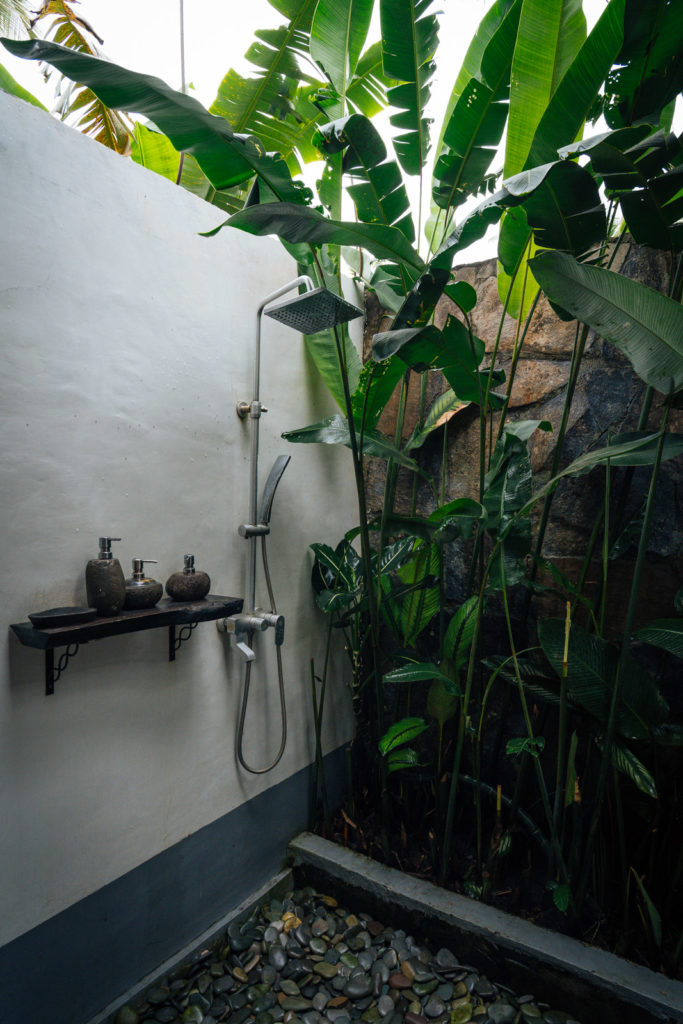
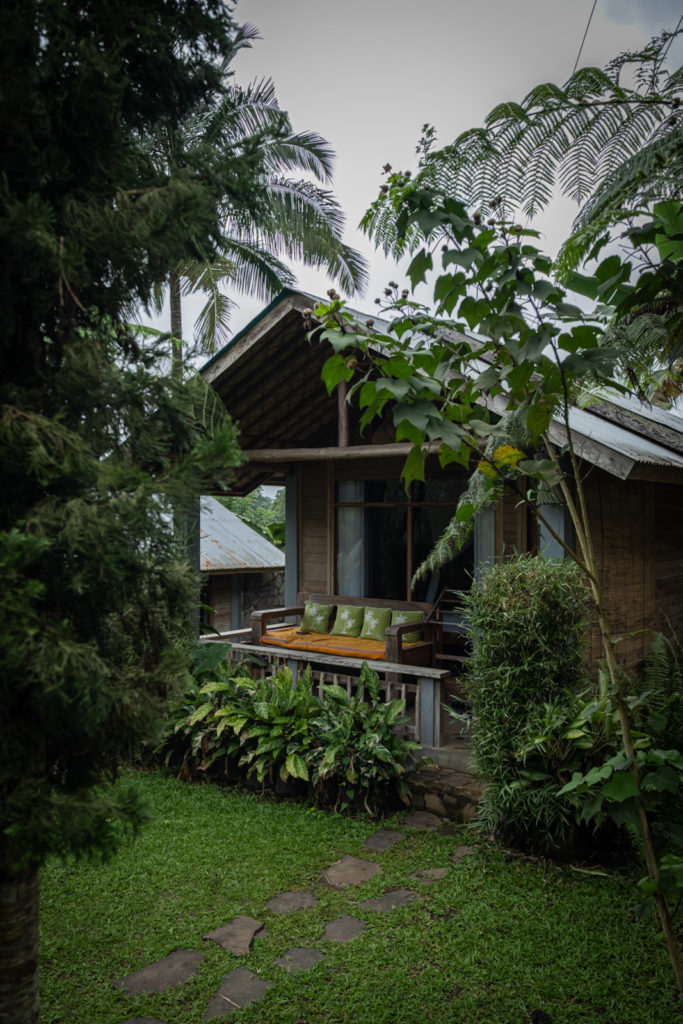
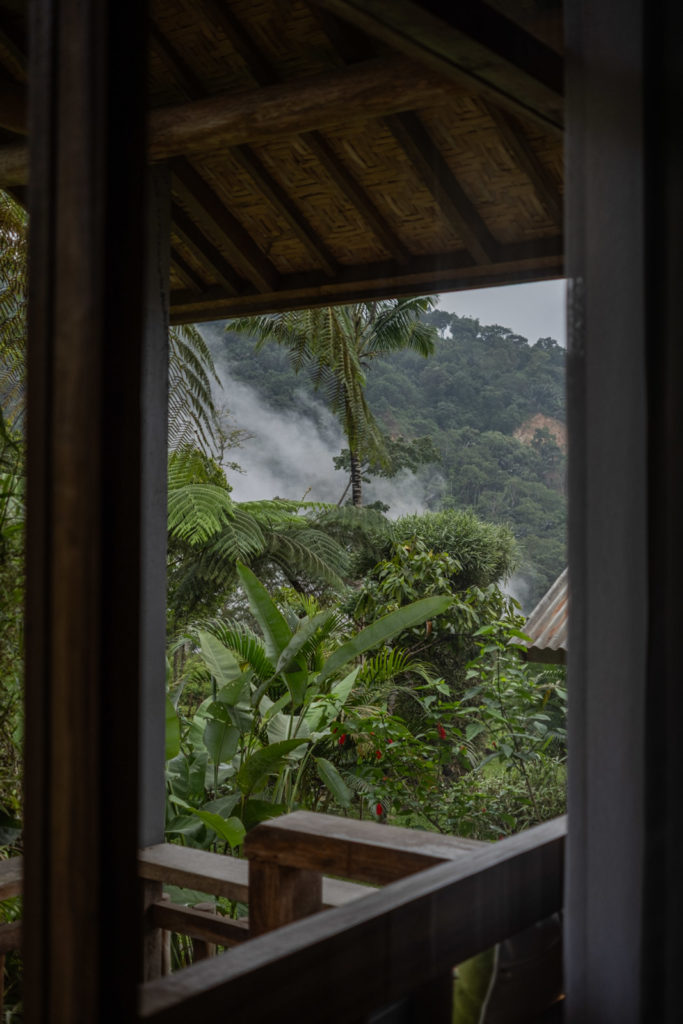
When we arrived at the homestay in the late afternoon, it was raining — the perfect time to unwind after the long journey from Dubai, which had begun the previous day. We took it slow, enjoying the calm atmosphere before sitting down for a delicious home-cooked dinner shared with the family. The fresh, local dishes and warm hospitality made us feel right at home. After dinner, we headed to bed early — the next morning we’d be waking up before sunrise to visit the Kelimutu Volcano.
The Geckos Homestay also arranges drivers and offers motorbike rental on site, making it easy to explore the area at your own pace.
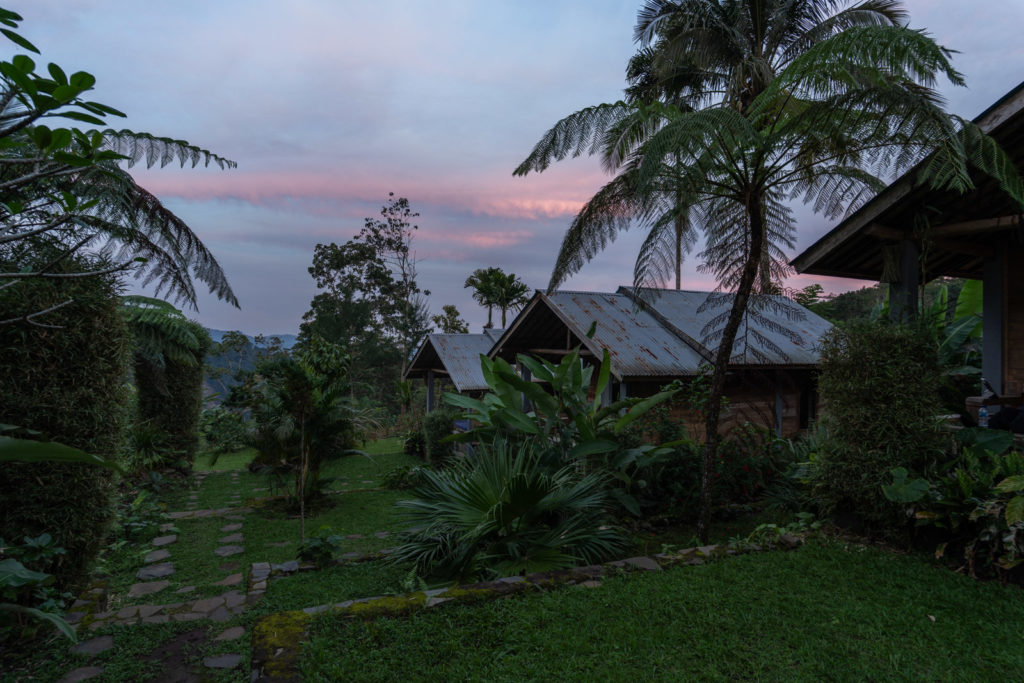
Top Things to Do in Moni
- Watch the sunrise at Kelimutu Volcano
- Hike to remote waterfalls like Murukeba
- Relax in natural hot springs in the rice fields
- Explore scenic rice terraces by motorbike
- Visit traditional villages like Wologai
- Try local food at family-run cafés and homestays
Sunrise Hike to Kelimutu Volcano Lakes
Day two started at 4 AM for the highlight of Moni: the sunrise hike to Mount Kelimutu’s three colorful crater lakes. Our homestay told us we could ride a motorbike ourselves to the base of the volcano, but since that would mean driving in the dark — and we’re not very experienced riders — we asked them to arrange a driver instead. We also agreed the driver would only come if it wasn’t raining; on wet mornings the mountain sits in thick cloud and the lakes disappear.
Luckily, the weather held. After a 30-minute drive from Moni, we reached the entrance (150,000 IDR per person). From the parking area, it’s a 30–40 minute walk to the summit.

At the top, you’re rewarded with a surreal, unforgettable view: three crater lakes, each a different color, slowly shifting as the sun rises. The lakes are famous not just for their vibrant hues — which can range from turquoise to deep red or even black — but also for how they change color over time due to varying mineral content, chemical reactions, and geothermal activity beneath the surface.
Surprisingly, it was very quiet — just a handful of tourists, mostly local. Compared to more famous sunrise spots like Mount Bromo or Ijen, the experience felt much more serene and intimate.
At the base of the volcano, you’ll find a few small stalls selling hot drinks, water, and snacks — perfect for a quick warm-up before or after the hike.
Pro tip: Wear layers of clothes and bring a flashlight or headlamp if you have one. It makes those chilly early moments a lot more comfortable.

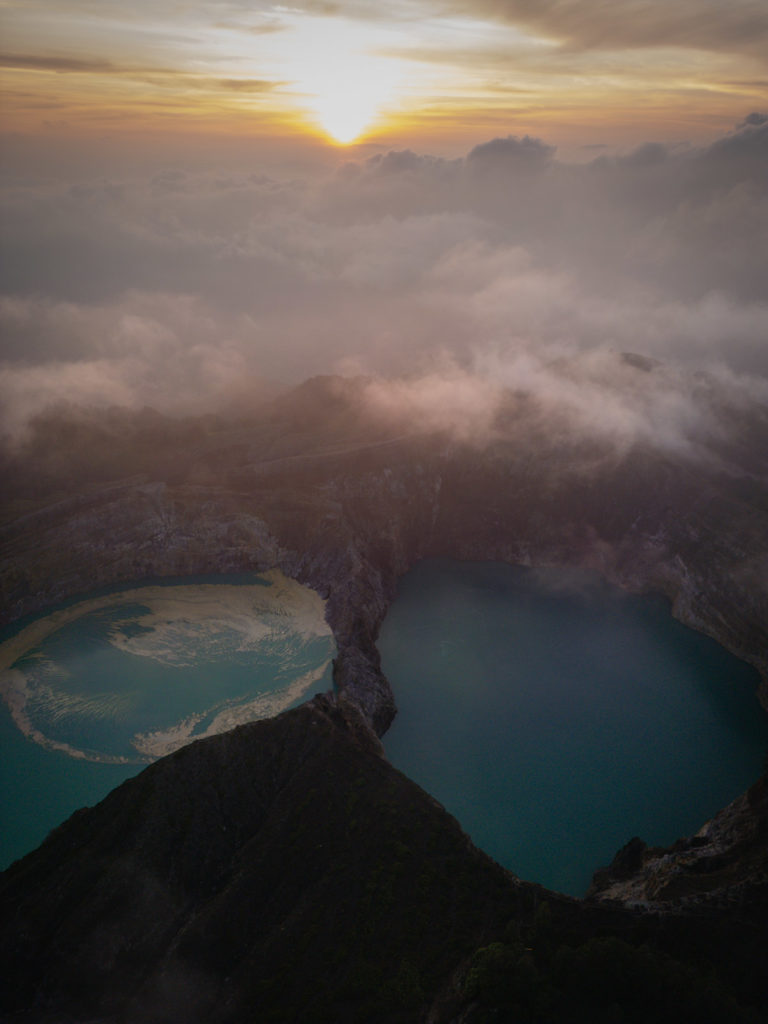
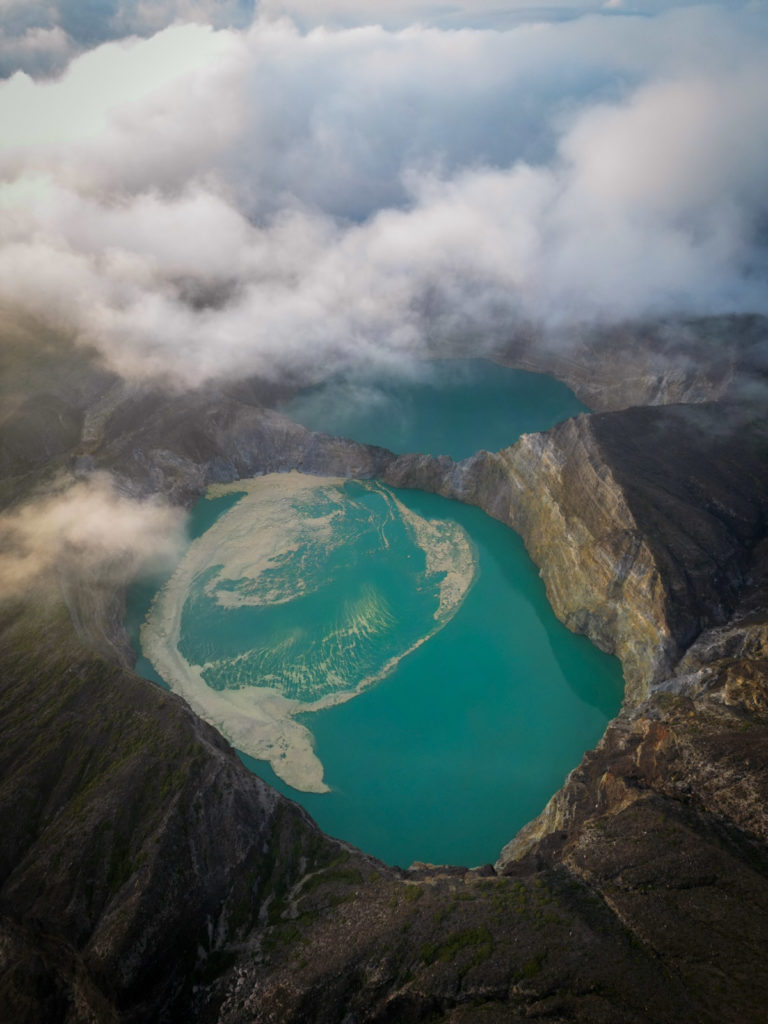
Detusoko rice fields
After the hike, we returned to the homestay for breakfast and rested a bit before exploring the nearby rice terraces and local villages. The roads around Moni are in good condition and not busy at all, making it the ideal place to explore by motorbike even if you have limited experience. Do wear a helmet though. Safety first! We rented one directly from our homestay and set off toward the Detusoko rice fields. It ws a scenic drive with barely another tourist in sight. Along the quiet roadside we spotted a few very basic cafés overlooking the terraces. We stopped at Alya Café for an iced tea and enjoyed the peaceful views.
Wologai Traditional Village
Our next stop was Wologai Traditional Village. I’ll admit, I was skeptical at first. Some online reviews had made it sound like a tourist trap where you’d just be asked for money. But in reality, we were the only visitors there. Juli, a local woman from the village, welcomed us. She did her best to share its customs, architecture, and history with us. We toured the village together, then sat down for a cup of coffee at her coffee shop. With basic English, some Google Translate, and lots of smiles. While chatting, we met her daughter, who promptly featured us on her TikTok — unexpected but fun! I’m really glad we stopped by; it turned out to be a genuine and warm experience.
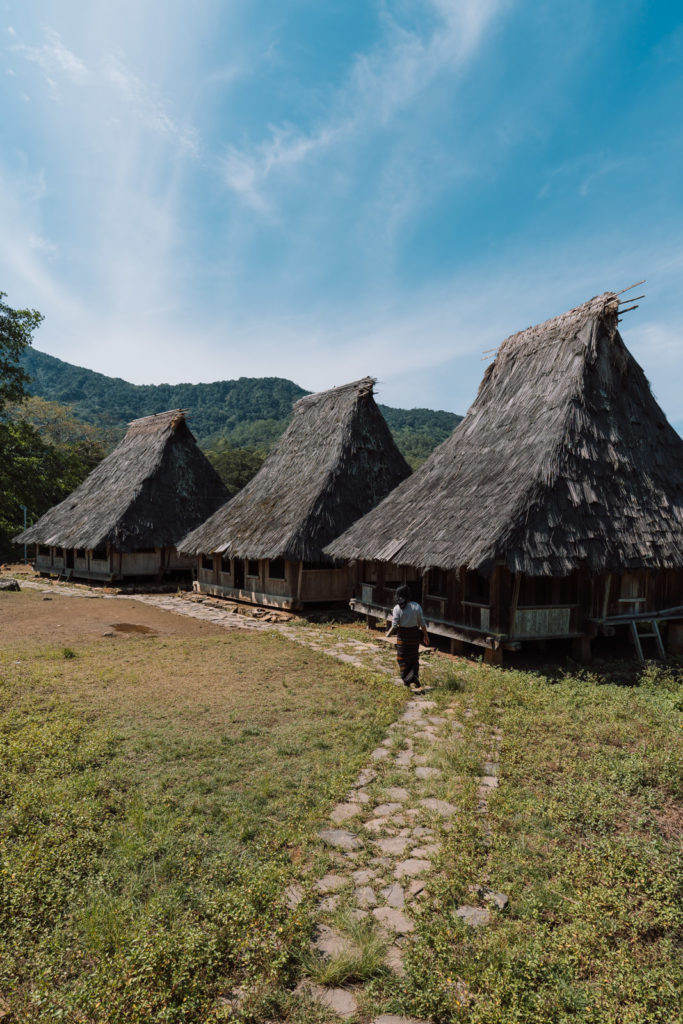
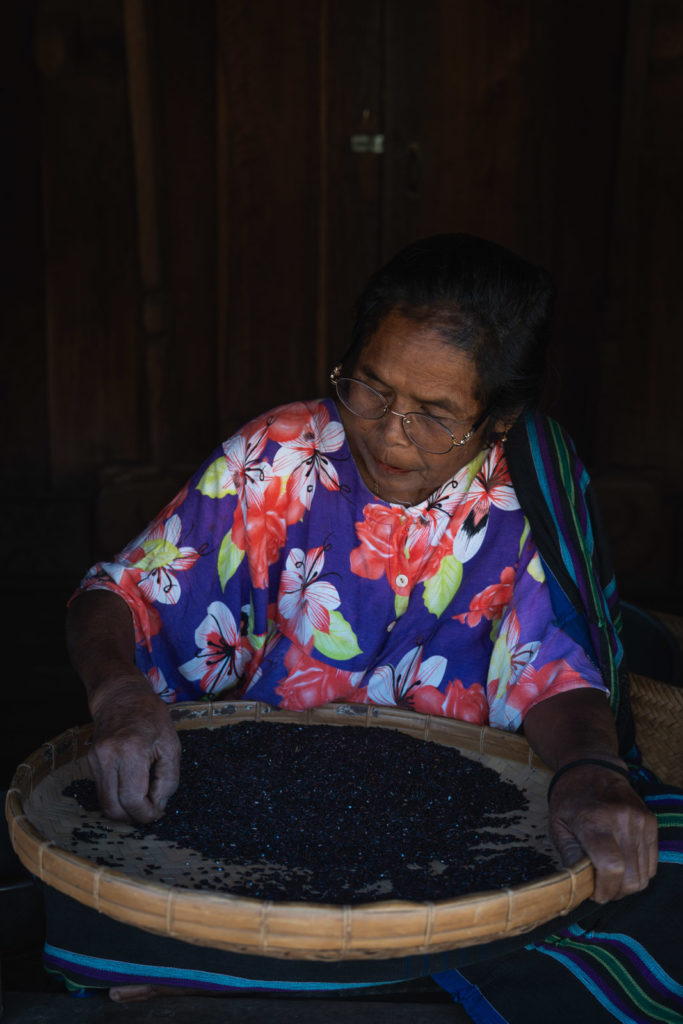
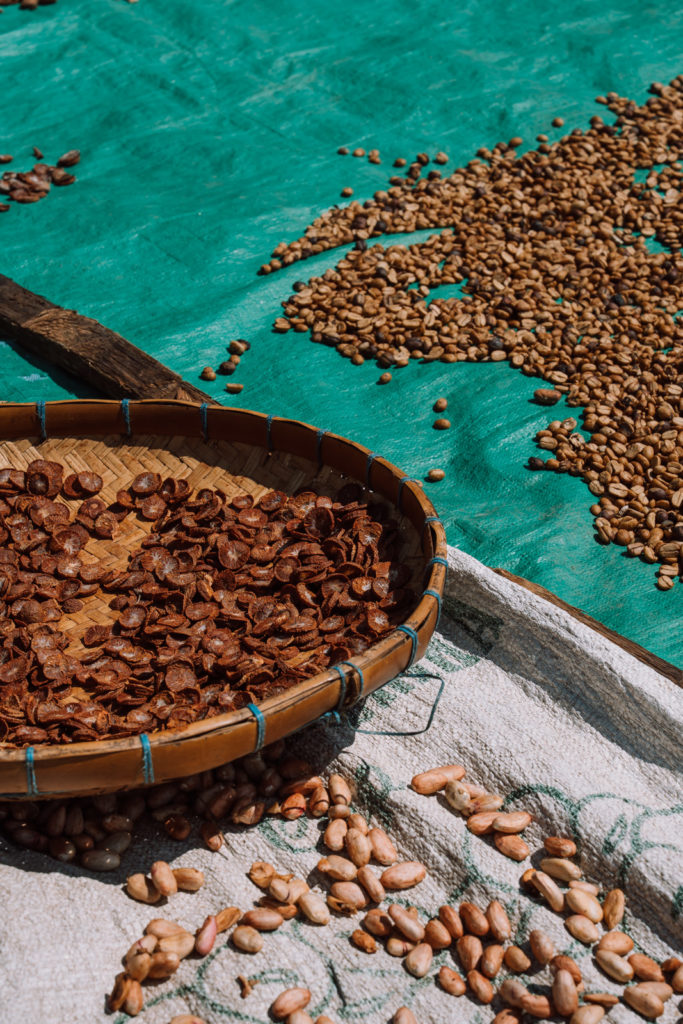
Murundao Waterfall
Afterwards, we had lunch at Good Moni Café back in town. Just a few minutes down the road is Murundao Waterfall, which you can reach with a short 5-minute walk from the main road along a paved path. It’s a nice little stop, but we had our sights set on a more adventurous hike to a more remote waterfall: Murukeba.
Hot Springs, Murukeba waterfall & valley
Using the maps.me app, we located the trailhead and set off. On the way, we passed some natural hot springs in the middle of the rice fields. As the sun was already dipping low, we decided to skip them and focus on the hike.
The trail began by following a small irrigation canal — very similar to the levadas in Madeira — and then led us into the wilderness. Halfway through, we found ourselves in a stunning open field surrounded by rolling grasslands and grazing cows. Here, the trail split: one path led to the Murukeba Waterfall, the other toward a volcanic valley with natural hot springs and thermal streams.
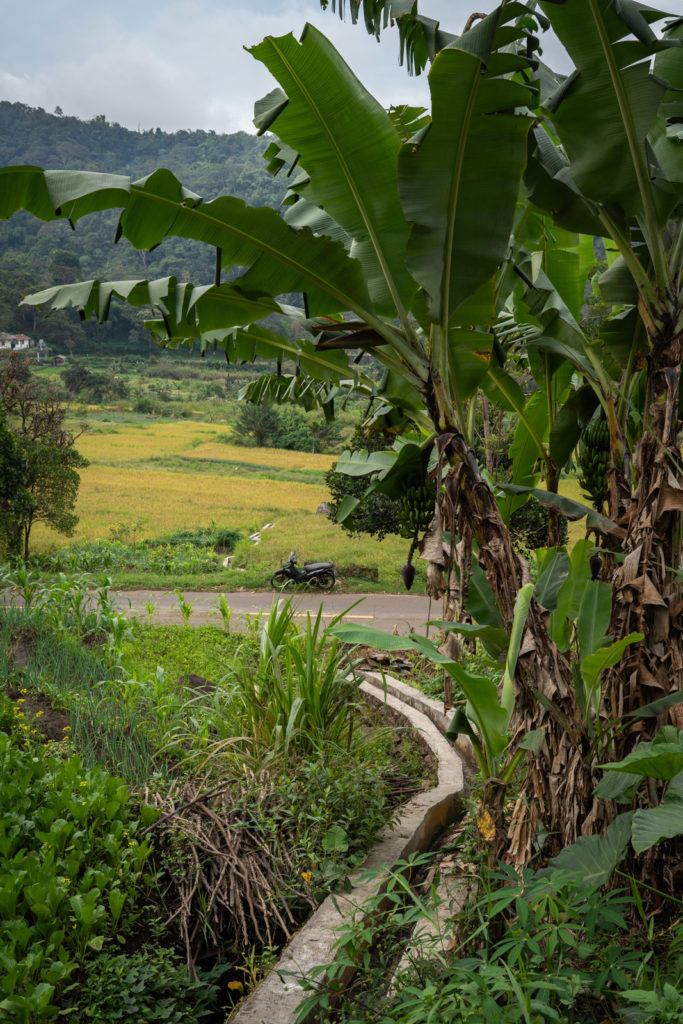
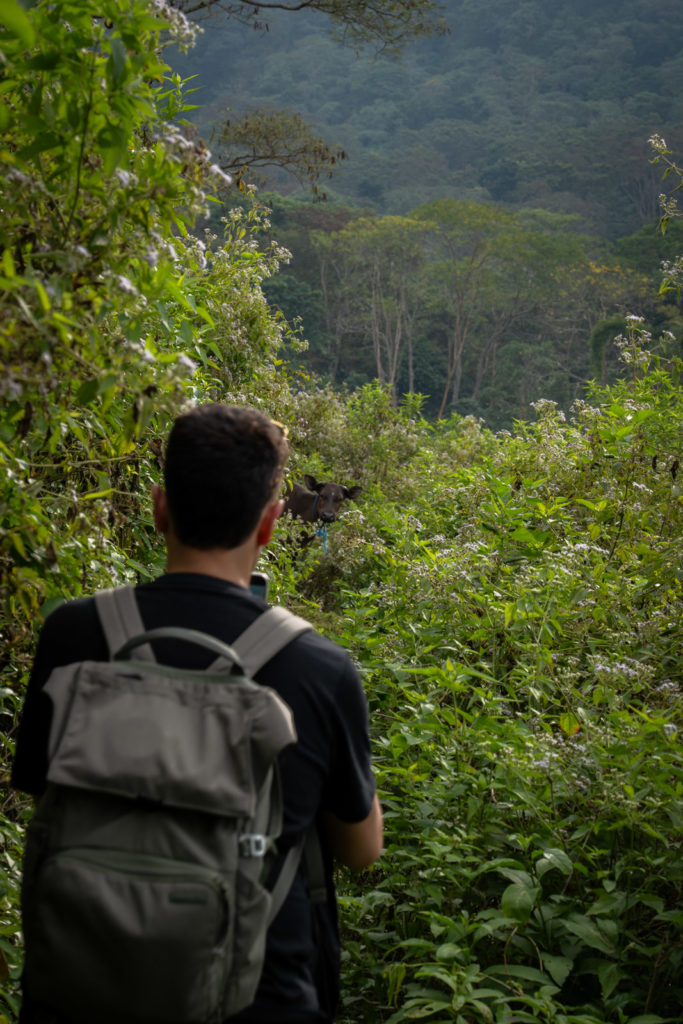
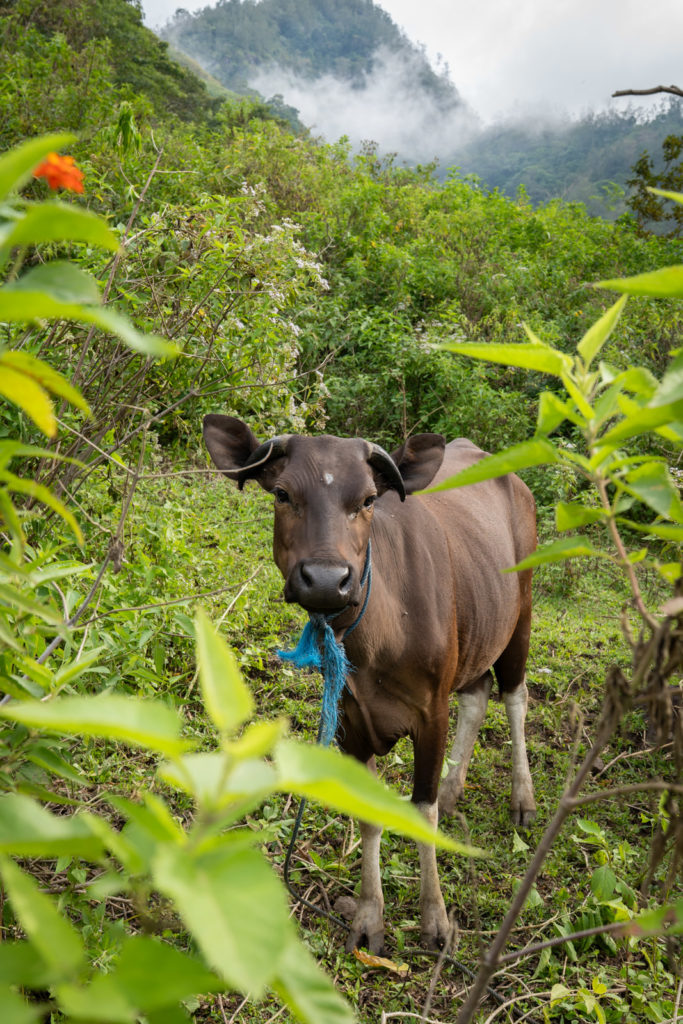
We first tried to reach the waterfall, but the trail was overgrown, full of insects and spiderwebs. Near the end, we had to cross a river on a bamboo pole. Normally, it would have been a small stream, but due to heavy rains in the days before, it had swelled into a proper river — and the bamboo crossing was way too slippery to be safe. We turned back.
Instead, we followed the other trail toward the base of the volcano. After a bit of searching (and some back-and-forth), we found the path and were rewarded with one of the most beautiful valleys of the trip. Green hills dotted with cows, steaming hot water trickling through the grass, and little vents of boiling water bubbling between the rocks. It felt wild and untouched.
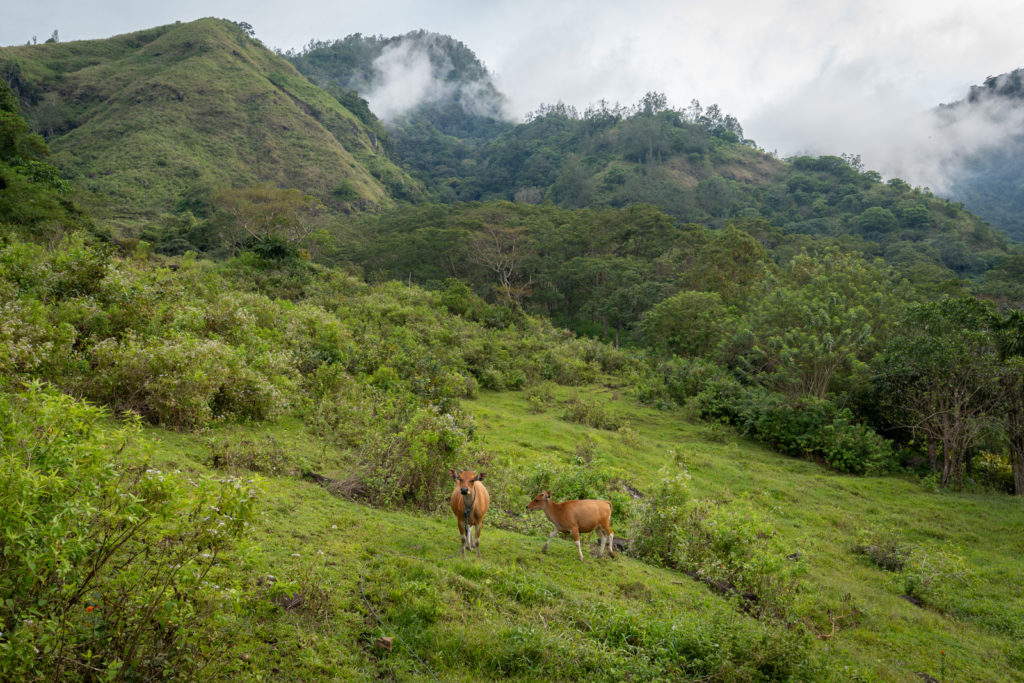
After making our way back — and getting a little lost finding the original path down to our motorbike — we returned to the homestay for another delicious home-cooked dinner. A perfect end to an adventurous day.
Related guides
Interested in exploring more of Flores and Komodo? Check out our other travel guides:
- Flores and Komodo Itinerary: 10-Day Travel Guide
- Maumere Travel Guide: Beach Bliss, Snorkeling Adventures & a Quiet Escape on Flores
- Three Days Sailing Around Komodo
- Labuan Bajo Travel Guide: A Laid-Back Stop Before and After Komodo
Frequently Asked Questions About Moni Flores
You can take a private driver (600,000 IDR), public bus (50,000 IDR), or shared taxi (travel).
Yes! It’s the best base to visit Kelimutu Volcano and explore hidden hot springs, rice terraces, and local villages.
Absolutely. You can rent a motorbike or arrange a driver through your homestay.
